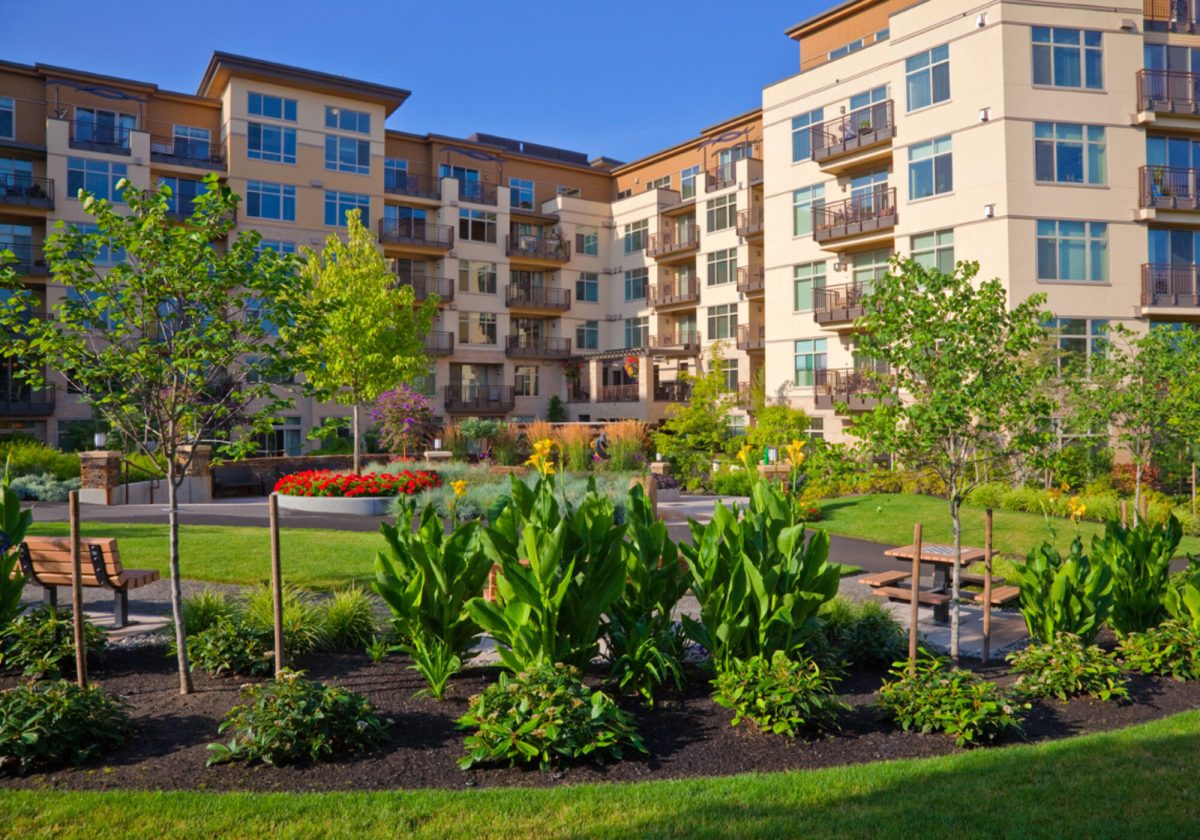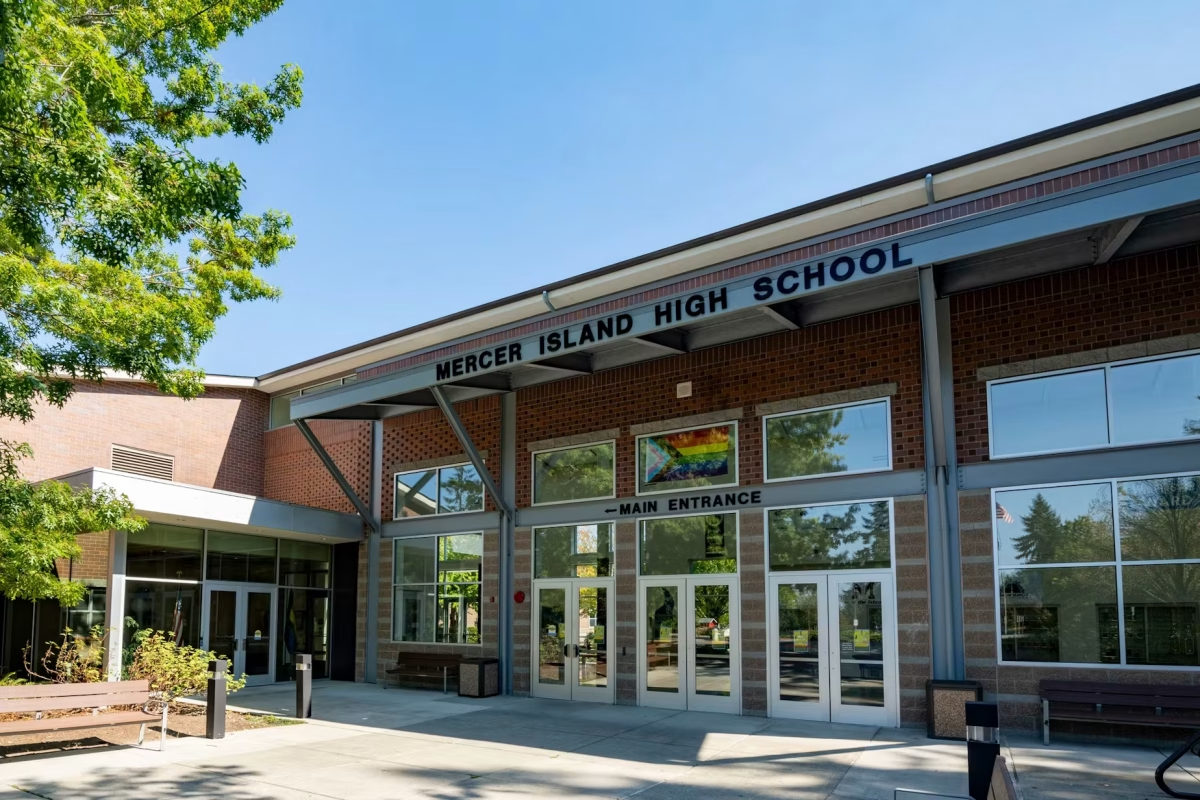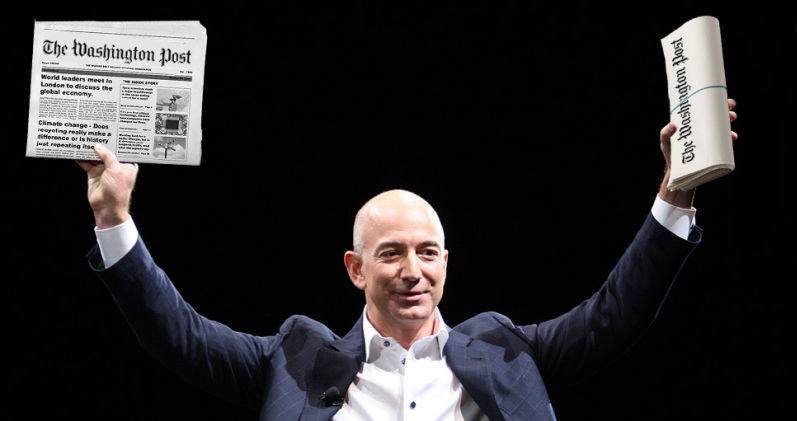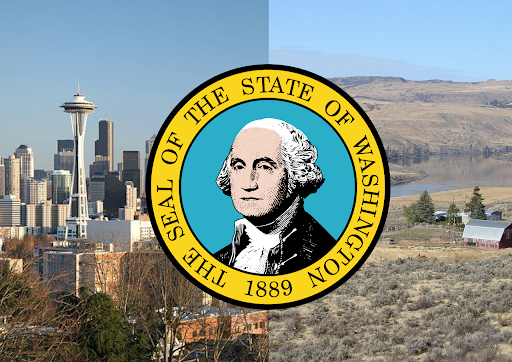
What is the identity of Washington State? If you were to ask a Washingtonian, their answer would probably be a shrug. Nobody wears t-shirts to display their Washington pride or feels a strong emotional connection to the state as their home. Most states have a history, a culture, a popular image, a sense of identity and community associated with them. Washington, seemingly, does not. And it really needs it.
The founding myth of Washington is a flaccid gesture towards the Space Needle, tech companies and fir trees. Our history is erroneously remembered as largely empty, save for Lewis and Clark, a few massacres of Natives and a generally progressive populace. Our lack of hospitality is described by outsiders as the Seattle Freeze. Our flag, God help me, deserves to be drenched in gas and lit ablaze. Our weather, which can scarcely be seen once the sun goes into hibernation after October, is oppressively rainy and frigid. Our land seems to be our one saving grace, but to be honest, trees and mountains aren’t exactly unique or inspiring, even if we’ve got pretty cool ones. The defining character of Washington, ultimately, is one of bored apathy.
But why does it have to be? Throughout history, humanity has razed entire countries to the ground in fiery revolutions; can Washingtonians not even handle making a new flag? The United States is not one homogenous body, but a federation of states, each with their own identities. Texas is the Lone Star state, the America of America. New York is the Empire state, business hub of the world and almost the U.S.’ second capital. Hawaii is… well, it’s Hawaii, it doesn’t even warrant an explanation. Even relatively minor states like Kentucky, Vermont and New Mexico have identities. But our state is seemingly just the child of a bureaucrat with a pencil and ruler. Are Washingtonians simply so bland that we cannot manage to live up to the unreachably high standards of lowly Ohio?
Dino Annest, a history teacher at MIHS who formerly taught Pacific Northwest History, doesn’t think so. “I think there are actually two states.” Annest said. “There’s the Space Needle state and the Goat Rock state. If you stand atop the Space Needle and look down, everyone below you thinks one way. If you’re on Goat Rock, you look out to the countryside and everyone below thinks another way. As a state, we’re bifurcated by the mountains and that creates a lot of unique cultural identities.”
In reality, Washington does have culture, but it is forgotten and ignored. There just isn’t enough interest in introspection for Washingtonians to learn about local cultures or to try to strike out and make something new. Washington as a state is plagued by a kind of atomized anti-social attitude, with many of its residents too focused on their own daily lives to look outwards at the society which ultimately shapes them. This attitude is to some degree a nationwide problem, and it has much broader and more dire practical implications than an ugly flag. One must only glance at local news or politics to notice the drought of attention. But I think a good starting point to fixing our cultural problem is to metaphorically clean our room. To put our things in order, and present a new model for state culture. Far from being unsalvageable, Washington already has much to celebrate, and has the potential for even more.
“We have trees here in Washington which you can’t find anywhere else in the country.” Annest said. “Our natural environment is just one of the reasons why Washington is one of the best places to live. Our history is less prominent, so we tend to focus on our environment instead.”
If we want to present a new understanding of Washingtonian culture, the first order of business is to create a new state myth, an aesthetic beyond tech companies, and even, in my opinion, beyond our admittedly magnificent trees. Examining our history, one finds that a lot of its apparent blandness comes from our homogenization of it. We bunch it all up into this conglomerate outside of time where settlers arrived, sat around doing basically nothing and then became woke and founded Amazon a couple years ago. Washington’s history is too often perceived as having no suffering, no real struggle, no characters or story. Washington was seemingly found as a blank slate, and still remains about the same today.
“They no longer teach Pacific Northwest History in high school, now it’s taught in seventh grade,” Annest said. “Which I thought was sad because it was a great class, it was a lot of fun to teach and we had a great time. The new curriculum is nowhere near as broad as it used to be, but I just don’t really know how you could do what we did here in high school in seventh grade. It’s just not really possible.”
Because of our disassociation with our history, we have forgotten the tales of those who settled a land so far from the U.S. capital that it took three months for orders to arrive via telegram, leaving Washington so independent that even Abraham Lincoln complained about its insubordination. We forget our progressive past, as a state which was one of the first to champion women’s rights. We forget our almost Napoleonic first territorial governor who fought incessantly with the legislature and courts for more power to prosecute his brutal wars against the Natives, and how he controversially jailed his political enemies in order to do so.
We forget the turmoil of the state during the Civil War, our parties fracturing again and again as Washington examined its place in the union. We even forget an event so notable that others from outside of the state have probably heard of it: that time when we almost started a war with Britain over a pig. Not only have we forgotten about the world the settlers built, but we have also forgotten the legacy of those who these settlers displaced.
“I think it’s important for people to know how diverse our state was when it started.” Annest said. “There are almost no cities west of the mountains who didn’t have a founding family that was Chinese, but nobody acknowledges that because we kicked them out of the territory in the 1880s. On top of that, we’re only just starting to tap into the culture of Indigenous people in Washington, and getting interested in what previous societies did before us.”
But, even with the barebones understanding most Washingtonians have of their own history, we can still make something. That image of a frontier territory untainted by the evils of man (while not entirely true), could—far from being a source of mundanity—be a well of inspiration. Even with seemingly nothing, we can still forge a new state myth.
Our state is relatively free from the hatred, violence, corruption, famine, poverty and warfare which characterize so many other regions of the Earth. We remain one of the most distant contiguous states from our nation’s capital. We are, relative to the rest of the Union, isolated off in the distance. In many evaluations, Washington has been judged one of the best states to live in, due to our thriving tech, agriculture and green energy sectors and our relatively competent government. While our problems remain numerous and real, we must also realize how relatively lucky Washington has been with the platform we’ve been given to build upon. With regards to a state myth which encapsulates our identity, I think this concept, a blank slate in which we can create a utopia, is a good candidate. In ancient Greek mythology, the pinnacle of all existence was Mount Olympus, the home of the gods. Every society, in a similar way, chases that shining hill on the horizon, that better day. Washington has plenty of mountains; we just have to make them shine.

To make Washington something to be proud of, though, we first must remodel the symbol which flies above it: our flag. Most human beings do not have the misfortune of being familiar with the Washington State flag. For the uninitiated, it is a green bed sheet with a state seal on it. The seal, emblazoned with a copied portrait of George Washington (a man who died before the state’s land even belonged to the U.S.), is surrounded by a yellow circle and text helpfully reading, “The Seal of the State of Washington 1889,” because the ambiguity of leaving it blank would just be too much for us to bear. If it were not already clear, the existence of the Washington State flag (in its present condition) makes me unreasonably upset. This is not merely because of its poor flag design, but more so because it screams bureaucratic afterthought, which I think is very emblematic of the state’s identity problem. If it were simply badly designed, but still had some character–still attempted to represent the state–then I wouldn’t have nearly as much of an issue. But as is, it is a lazy seal on a sheet, and the seal is not even very good at representing the state anyways.
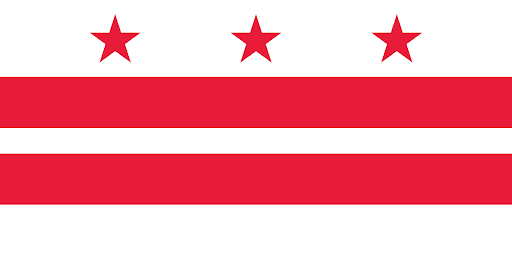
Washington’s flag has been utterly forgotten by Washingtonians, which is partially why there seems to be little interest in changing it. Even I had forgotten about its existence, until a recent trip to Washington D.C., our nation’s capital. This non-state, with the same name as ours, has a flag which is also lazy. It is a rip of the Washington family coat of arms, made into flag format. But it is more abstract and can easily be interpreted to represent equality and classical American Republicanism through its two horizontal stripes and three stars. Washington D.C. would be one of the most proportionally Black and most progressive states if it were to be admitted as a state, making equality quite relevant; and as the nation’s capital and home to our greatest monuments to American history, it is quite fitting that its flag would feel distinctly American. Visit D.C. and you will see their flag of Washington flying from nearly every building, bikers will speed by you with flag patterned jerseys, and street lamps will be equipped with multiple copies of the thing. In Washington D.C., their flag stands as a symbol which encapsulates the history and culture of the area. In Washington State, our flag is something government buildings legally have to fly and not much else. I don’t expect us to ever reach the flag-loving heights of D.C., but at least seeing our flag hanging from a few porches would be a nice start.
Now, there are a few reasons for the total lack of any Washingtonian cultural identity which I have been lamenting throughout this piece. These causes primarily include the general apathy of Washingtonians and the resulting lack of motivation in our politicians to try to institute cultural reforms. The latter group would probably make the following argument to defend themselves: that Washington as a whole has a thriving economy and no real tourist sector, and therefore does not need to waste resources on immaterial things like solidifying a state identity when they could use them to, for instance, help our homelessness problem. In a sense I find this position agreeable; putting food on the table is probably more important than building a statue of Issac Ingalls Stevens dying in the Battle of Chantilly. But in another sense, I think this opinion is not sufficient, because as I’ve repeated, we are literally not even trying right now. The cost of a new flag, in the terms of state budgets, is basically nonexistent. We could pretty easily get the flag for free by opening a statewide competition, and then the only costs would be replacing the flags on government buildings. Things like statues or investments in culture are more of a real question in the budgetary sense, but even these on a statewide scale would not amount to very much as long as we keep our projects modest. Besides, things like statues or monuments last for a long time.
My argument that these investments in Washington culture and community are cheap would still be meaningless if I were just advocating throwing a small amount of money in the money hole. But I think cultural development has genuine value aside from the novelty of having something in the state which isn’t mediocre. Aside from the added tourism and immigration we would receive, which could pay back a good amount of our expenses, there is (I think) immense societal value as well. America in general and Washington especially is currently going through a crisis of alienation, atomization, mental health issues and political apathy. A lot of this stems from how we structure our societies. Our cities are built around cars rather than people, our politics around presidents rather than state legislatures and our lives around devices and profit rather than human beings. Humans are social creatures; we need to have community, to have people who will support us and who we can fight for. As long as our state appears to be a bureaucratic afterthought, Washingtonians will continue to view it as an afterthought in the grand scheme of their busy lives. A first step for reengaging people civically and socially is to at least do the bare minimum to create an appealing platform which might bring some people together and show them that Washington deserves their attention. If we want to end Washington’s identity crisis, we must remember our history, adopt a new optimistic view of the state’s potential, remake our flag, engage with our local communities and invest in cultural development.



